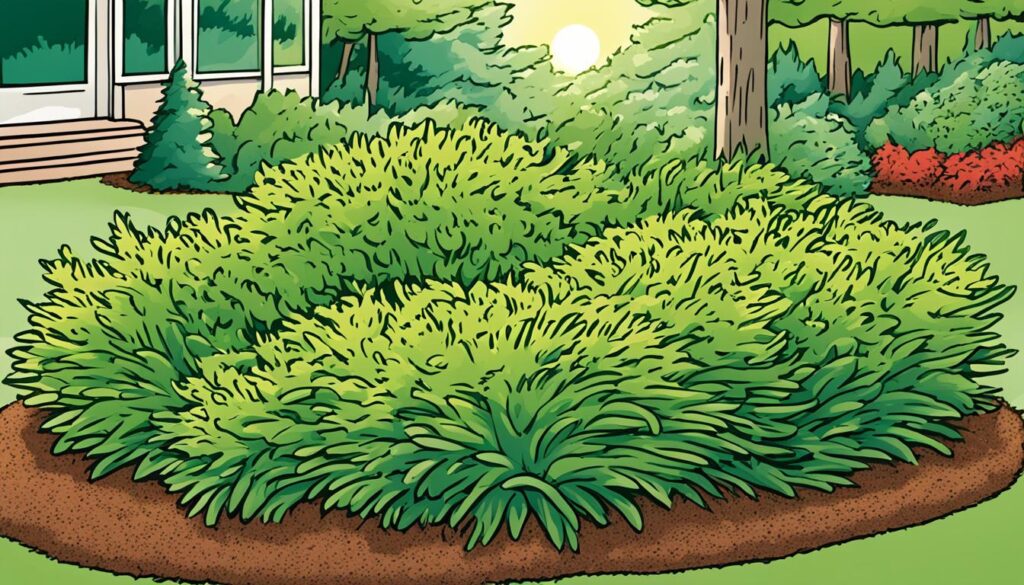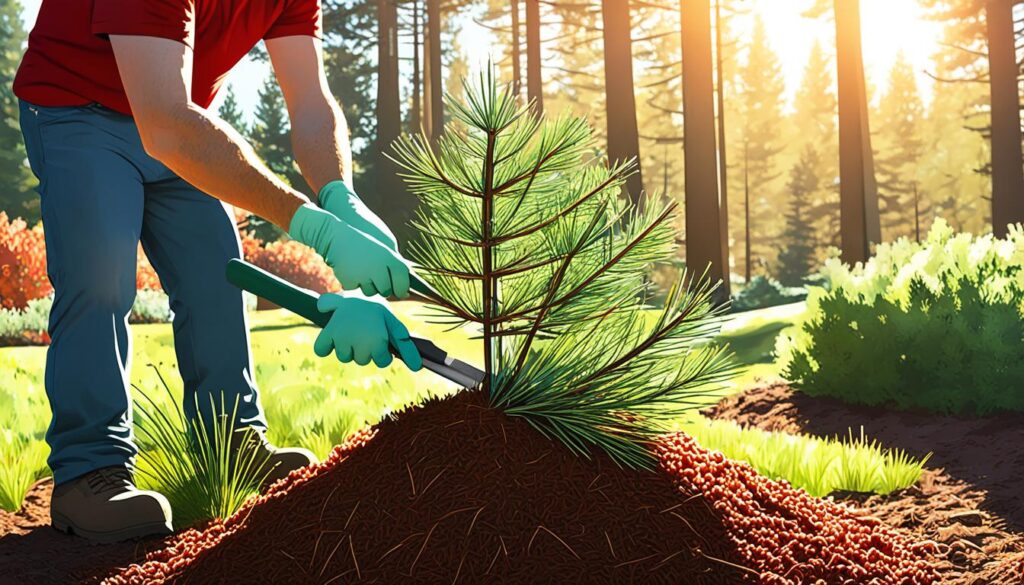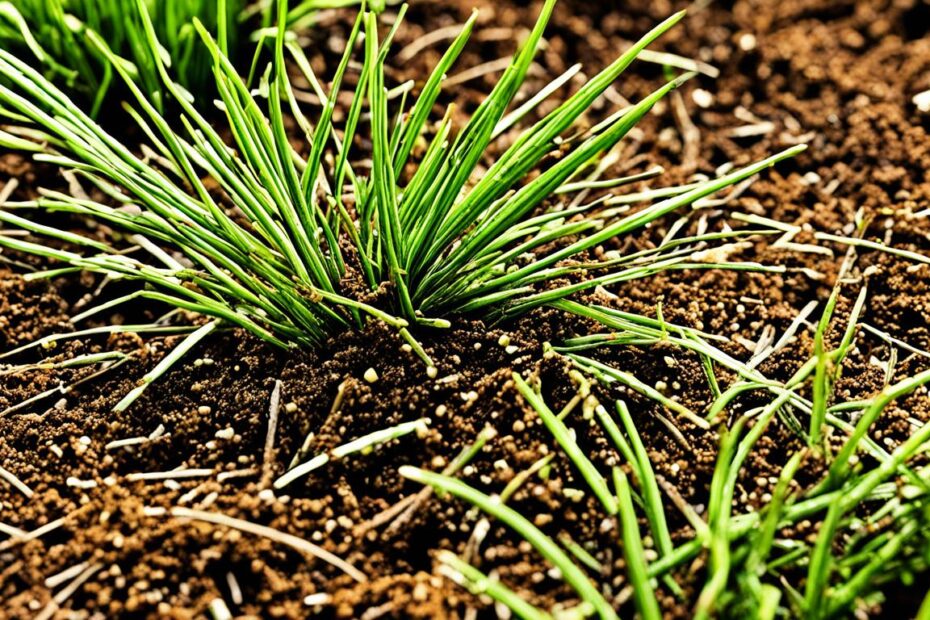Are you tired of battling weeds and struggling to keep your plants hydrated? Have you ever considered using pine needles in your garden soil? Contrary to popular belief, these fallen forest gems can work wonders for your plants. But how exactly do pine needles benefit garden soil? And what are the best practices for incorporating them into your gardening routine? Let’s dive into the world of pine needles and discover the hidden secrets to achieving a thriving, beautiful garden.
Whether you have towering pine trees in your yard or you’re surrounded by an evergreen forest, pine needles are in abundance. Instead of seeing them as a constant nuisance, it’s time to view them as a valuable resource for your garden. But just how can these seemingly innocuous needles transform your garden into a flourishing oasis?
- Pine needles are a lightweight and natural mulch that can help retain moisture in your garden soil.
- Contrary to popular belief, pine needles do not acidify garden soils.
- Pine straw, as pine needles are often called when used as mulch, can suppress weed growth and supply nutrients to the soil as they slowly break down.
- Properly using pine needles as mulch can enhance the overall health and beauty of your garden.
- Take care to not use too thick of a layer of pine straw, as it may shed water away from your plants.
Takeaways>
How to Use Pine Needle Mulch
To benefit from the advantages of pine needles as mulch, follow these simple steps:
- Spread the pine needles around your trees, shrubs, and garden beds.
- Use a layer of about 2 inches to start with, as the needles will settle down to about 1 inch.
- Shake and toss the pine straw to create a fluffy layer that evenly covers the soil.
Remember, pine straw is a renewable resource that can be obtained from your own pine trees or locally. However, it’s important to note that pine needles should not be directly added to garden soils. They break down slowly and are best used as a top dressing to nourish the plants over time.
Pine needle mulch provides numerous benefits for your garden, and applying it correctly is key to achieving optimal results. Now that you know how to use pine needle mulch, let’s explore the many advantages of this natural and sustainable mulching material.
The Benefits of Pine Straw
Pine straw, also known as pine needles, is a versatile mulch material that offers numerous advantages for your garden. Whether you’re a seasoned gardener or just starting out, incorporating pine straw into your landscaping can provide significant benefits for your plants and soil.
One of the key advantages of using pine straw as mulch is its lightweight nature. Unlike heavier mulch materials, pine straw is easy to work with and doesn’t compact the soil. This allows for better air circulation and water absorption, promoting healthier root growth for your plants.
Another great benefit of pine straw is its natural weed-blocking properties. Pine straw tends to bring fewer weed seeds with it compared to other types of mulch, helping to minimize weed growth in your garden. Additionally, the dense layer of needles acts as a barrier, blocking sunlight and preventing weed seeds from germinating.
The slow decomposition rate of pine needles is also a significant advantage. While other mulches may break down quickly and require frequent replacement, pine straw takes longer to decompose, reducing the need for regular mulch replenishment. This means less maintenance and cost for you, allowing you to enjoy a beautiful garden without the hassle of constant mulch renewal.
One of the most remarkable benefits of pine straw is its ability to moderate soil temperature. During the winter months, pine straw acts as an insulating layer, protecting plants from freezing temperatures and reducing the risk of winter damage. In the summer, pine straw keeps the soil cooler, preventing excessive heat stress on plant roots.
Pine straw also excels in its ability to work on slopes and hillsides. Unlike other mulch materials that can wash away with heavy rain, pine straw allows water to penetrate the soil, preventing erosion and encouraging proper drainage.
Overall, the benefits of using pine straw as mulch in your garden are clear. Its lightweight nature, weed-blocking properties, slow decomposition, temperature moderation, and suitability for slopes and hillsides make it an excellent choice for both experienced gardeners and beginners. Give your garden the advantage it deserves with the natural benefits of pine straw.

| Advantages | Description |
|---|---|
| Lightweight Nature | Pine straw is easy to work with and doesn’t compact the soil, allowing for better air circulation and water absorption. |
| Weed Prevention | Pine straw brings fewer weed seeds and blocks sunlight, reducing weed growth in your garden. |
| Slow Decomposition | Pine straw takes longer to break down, reducing the need for frequent mulch replacement. |
| Temperature Moderation | Pine straw acts as insulation in winter and keeps the soil cooler in summer, protecting plant roots from extreme temperatures. |
| Slope and Hillside Suitability | Pine straw prevents erosion and allows water to reach the soil on slopes and hillsides. |
Considerations and Drawbacks of Pine Needle Mulch
While pine straw has many benefits, it’s important to consider some drawbacks as well. Here are a few things to keep in mind when using pine straw as mulch:
- Availability: Pine straw may not be readily available for sale in all areas, so you may need to source it from your own property or local resources.
- Insufficient Coverage: When using pine needles as mulch, it’s crucial to ensure that the soil is fully covered. Insufficient coverage can create gaps where weeds can thrive.
- Weeding Challenges: Pine straw has sharp needles, which can make weeding a bit more challenging. Take caution while working in the garden to avoid pricks and scratches.
- Flammability: It’s important to note that pine straw is flammable. If you live in an area prone to wildfires, it may not be the best choice for your garden.
- Water Shedding: Using too thick of a layer of pine straw can create a barrier that sheds water away from your plants. It’s recommended to use a layer of 2-4 inches to prevent this issue.
Considering these factors and taking appropriate measures will help you make the most of pine straw mulch while minimizing any potential drawbacks.
Next, let’s explore some maintenance tips for proper cleanup and upkeep of pine needles.
Proper Cleanup and Maintenance of Pine Needles
When it comes to maintaining your garden, cleaning up pine needles is an important task to keep your landscape looking tidy and reduce the risk of wildfires. Here are some maintenance tips to help you effectively manage pine straw:
- Rake up the fluffy layer: If you have an abundance of pine needles on your property, it’s recommended to rake them up regularly. This not only improves the visual appeal of your garden but also helps prevent the buildup of flammable material.
- Leave a protective layer: While cleaning up the pine needles, it’s crucial to leave a layer of 2-4 inches around the drip lines of your pine trees. This layer acts as insulation for the tree roots and helps protect their health.
- Share the excess: If you find that you have more pine needles than you need, consider giving them away to friends or fellow gardeners who can use them as mulch or compost material. It’s a sustainable way to reduce waste and help others in their gardening efforts.
- Consider alternatives: If you’re unable to maintain an insulating layer of pine needles or prefer less flammable options, shredded cedar bark or composted material can serve as excellent alternatives. These materials provide similar benefits as pine straw while being less prone to fire hazards.
- Fertilize and protect pine trees: In addition to cleaning up and maintaining the pine needles, it’s important to fertilize and protect your pine trees, especially during drought conditions. Proper care ensures their continued health and vitality.
By following these maintenance tips, you can effectively clean up pine needles and ensure a healthy and beautiful garden environment. Remember, taking care of your landscaping not only enhances its aesthetic appeal but also contributes to the overall safety and well-being of your property.
“A well-kept garden is a testament to the love and care put into it.”

Conclusion
In conclusion, utilizing pine needles as mulch in your garden can provide a host of benefits. Their ability to retain moisture helps keep your plants hydrated, reducing the frequency of watering. Additionally, pine straw acts as a natural weed suppressant, minimizing the need for manual weeding and allowing your plants to thrive without competition.
Furthermore, pine needles gradually break down over time, releasing essential nutrients into the soil. This slow nutrient release ensures a steady and continuous supply of nourishment for your plants, promoting their healthy growth.
While there are a few considerations to keep in mind, such as pine straw availability and the potential flammability in wildfire-prone areas, these challenges can be managed with proper use and maintenance. By incorporating pine straw mulch into your gardening routine, you can create a sustainable and cost-effective solution that enhances the beauty and vitality of your garden.
FAQ
Can pine needles acidify garden soils?
Contrary to popular belief, pine needles do not acidify garden soils. They can actually be beneficial when used as mulch.
What are the benefits of pine needle mulch?
Pine straw, or pine needles used as mulch, have several benefits. They are lightweight, help retain moisture, suppress weeds, and slowly break down to enrich the soil. They also moderate soil temperature and prevent winter damage.
How do I use pine needles as mulch?
To use pine needles as mulch, simply spread them around trees, shrubs, and garden beds. It’s recommended to use a layer of about 2 inches, as the needles will settle down to about 1 inch. Shake and toss the pine straw to create a fluffy layer.
Are there any drawbacks to using pine needle mulch?
While pine straw has many benefits, there are some considerations and drawbacks. Availability can be an issue, as pine straw is not commonly available for sale. Weeding in pine straw can also be challenging due to the sharp needles, and it is flammable, so it may not be suitable for areas prone to wildfires.
How should I clean up and maintain pine needles?
If you have an abundance of pine needles on your property, it’s recommended to rake up the fluffy layer to reduce wildfire risk. However, it’s important to leave a layer of 2-4 inches around the drip lines of pine trees to protect their health. You can give away the excess pine needles to friends or fellow gardeners. If you’re unable to leave an insulating layer of needles, shredded cedar bark or composted material can be used as an alternative.
Can I use pine needles in other areas of my garden?
Yes, pine straw can be used around flower gardens, roses, and other plants where weed and moisture control are desired. It can also be used on slopes and hillsides to allow water to reach the soil instead of washing away.
